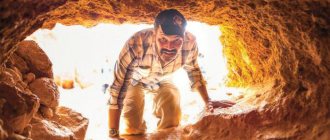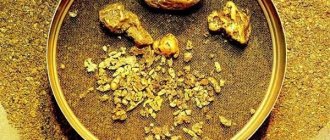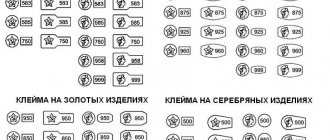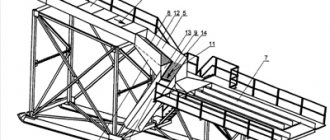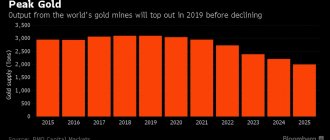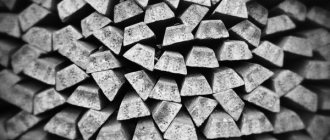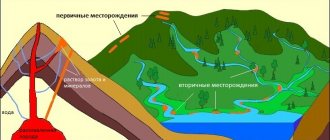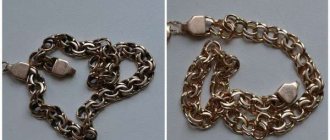James Hurst
Gold mines made James Hearst the personification of the American dream: born into a rather poor family, by the end of his life he was able to amass a huge fortune and died one of the richest and most famous people of his time. Contemporaries said that Hirst had a “nose” for wealth-generating veins. The fact that he began mining gold as a boy also helped the future prospector achieve success. Hearst, forced to drop out of school, and his friends helped local miners, and when the gold rush hit California, he was ready for hard work.
Hearst went to the mines in the company of two cousins. At first, luck turned away from the young people: at the end of a year of searching, they had only $40 left for three of them. Then the brothers moved to Grass Valley and there they finally discovered a gold mine that changed their lives. Soon Hearst opened his first mine, which he sold at a profit a couple of years later. Since then, the Californian’s business has been built according to the same pattern: Hirst acquired a potentially profitable plot, found gold on it and resold it for much more.
Gold Hunter, California. (wikimedia.org)
Having become rich, Hearst began investing in real estate, cattle breeding and horse breeding. However, his main source of income remained the mines, not only in California, but also in Utah, Montana and South Dakota. At the time of the tycoon's death, his fortune was estimated at between 200 and 400 thousand dollars.
John Reed: in search of placer gold
The names of John Reed and his son Conrad are usually remembered when funny incidents from the Gold Rush are told. As the story goes, which has already become a legend, one day 12-year-old Conrad found an unusual stone by the river, brought it home and made a support for the door from it. Three years later, Reed Sr. noticed the stone and decided to take it to a jeweler. It turned out that all this time there was a gold nugget lying at the entrance to the Reed house. They argue about the size of the find until now: some believe that the nugget weighed 3 kg, others are sure that it was no less than 8. However, the weight did not matter much - the fact of discovering a valuable metal was much more important.
Without thinking twice, Reed and his neighbors went in search of placer gold in the place where Conrad found the fateful nugget. At first, mining took place on the surface, but over time it moved underground. The necessary experience and knowledge was shared by miners from the tin mines of Cornwall, who, having learned about the Reeds' discovery, went to America.

A prospector who finds gold in California, 1850s. (wikimedia.org)
Gradually, gold mining grew into a full-fledged business for the Reeds - John opened a mine that brought so much gold that the US Congress decided to open a nearby mint that produced exclusively gold coins. In the 26 years from its discovery in 1835 until the outbreak of the Civil War in 1861, $5 million worth of coins were made from the gold mined at the Reed Mine. Unfortunately, only by these figures can we judge the success of John Reed's enterprise - information about his personal income has not reached us.
Where to look for gold. A practical guide for a beginner.
The book has already been written, more than 300 pages with photographs, diagrams, sketches and drawings of equipment for self-production. I share with you my knowledge: where to look, how to find it and how to mine gold. How to conduct reconnaissance and not get into trouble when mining. How to make your own equipment and save money.

This book is written for those who want to master gold mining, learn how to search and find gold, independently make mining equipment and use it in certain conditions with the greatest efficiency. Choose the right metal detector to search for gold and treasures.
From the book you will learn: - How to prospect and find rich gold. — How to make equipment yourself or how not to make mistakes when buying it. — How to avoid getting into trouble with the law. — How much gold can a prospector mine? — How to choose a metal detector and coil for searching for gold nuggets. — Where to go and where to look for gold and a lot of other useful information.
This textbook book has no analogues in Russian, and it is unlikely that there will be a more complete edition in other languages.
The whole world is open! With the knowledge and skills outlined in this book, you can find gold all over the world. Travel to other countries, all over the world, mine gold. Digging is a new hobby that brings real gold! Gold mining tourism is developed throughout the world. Discover a new world of hobbies.
Gold mining is not a luck, but a science. He who owns knowledge owns gold. Learn by reading this book, gain knowledge, this textbook will help you become a successful gold miner.
I tried to explain in simple language the concepts and terms used in geology, so that anyone could understand what equipment to use under certain mining conditions.
The indicated GPS coordinates of rich gold-bearing areas and overview maps will help you choose search locations. After reading this book, you will learn how to work with geological maps and satellite images and find promising areas for gold mining without leaving your home. Learn to search for gold like a professional miner.
PS I spent almost a year creating this tutorial. I quit and started again. They told me why and for whom are you trying, who will appreciate your work? The book will be stolen and posted for free on the Internet, and you will waste a year of your life. Year! Indeed, a year is a huge amount of time, but still, I feel sorry that my knowledge and experience are wasted aimlessly, therefore, through this book I share my knowledge with you. Friends, please support my project too. Your small contribution will help to publish a gold miner's textbook, and you yourself will receive the necessary information to become a successful gold miner. The knowledge gained from the book is worth much more than its price in the store.
“It’s better to see once than to hear a hundred times,” as popular wisdom says. Therefore, look at the photographs - indisputable proof of success. These photographs show gold found by metal detectors in Russia and Kazakhstan, including by the author of the book.
According to official data, gold losses during industrial mining amounted to 30%, but no one actually knows how much was lost. Gold nuggets larger than 20-80 mm are not recovered at all to this day by modern washing devices. Occasionally they are found in dumps and there are many examples of this.
— “A young worker, who had recently returned from the army, was checking a conveyor belt throwing rock into a dump and found a small cobblestone at the very edge; he tried to push it off the belt, but was surprised by its weight - as it turned out, more than 12 kg. The nugget is named “Aprelevsky”. The premium in those days for lifting gold was one ruble per gram of metal. The happy young man received a brand new Zhiguli from the state. And such finds are not isolated. On the B. Dogaldyn River, GPS coordinates 58.199173, 114.768456, nuggets from two to five kilograms and even unique ones weighing 10,540 and 12,800 kilograms were not uncommon.”
— “In trench No. 12-21, dug in the mouth of the Karakatitsa Creek, 665 gold nuggets were found (only nuggets weighing more than 10 grams were taken into account). The largest nugget weighed 6 kg 990 g and was found in a trench, in displaced weathering crust. Amur region, GPS coordinates 53.136431, 128.222997.”
Absolute confidence that there are enough rich gold-bearing places for everyone allows me not to hide my knowledge, but to share my experience with everyone who wants to take up this fascinating hobby - gold mining. A hobby that brings real gold.
“He who owns knowledge owns gold!” Rudolf Kavczyk
Finding and mining gold is not as easy as it seems at first glance. Without the necessary knowledge, you can pass by a site rich in gold. Pass by your luck. Do not think that to mine gold, it is enough to buy an advertised washing device. With knowledge, you can independently select the right equipment or make it yourself. To do this, the book provides detailed information and drawings.
Almost any mini-equipment can be made with your own hands, saving a lot of money. In addition, by creating equipment yourself, you tailor it to your tasks and mining conditions. In this book, I provide the necessary knowledge and share my experience so that you can create equipment for yourself, guided by the materials from this book. Understanding the gold mining process itself is very important, therefore, carefully study this publication. For example, errors in choosing the operating parameters of the sluice: filling, flow speed, uniformity of material supply, material size, load, slope, etc. lead to the loss of gold, and this is your money and your labor.
It is very easy to distinguish a beginner from a seasoned miner; a beginner always has a short and narrow sluice with a huge flow of water and, accordingly, little gold. Show me the gold you have mined, and I will immediately distinguish a beginner from a professional. The beginner does not have small gold.
I saw a sluice on which a pea-sized nugget lay at the very end of the sluice, practically rolled off it into the dump. At the same time, the guys claimed that they had a good area with large gold. In fact, they simply could not catch the small and medium gold on their sluice, losing it, wasting their energy and gasoline.
Therefore, I will try to give you an understanding of how each gateway element works. Thus, with the knowledge gained from this book, you will be able to mine more gold.
You need to start looking for gold at home, studying geological maps and mineral maps, comparing them with satellite images, examining in detail and studying the places of planned expeditions, choosing promising areas. The more thoroughly you study the geological features of the search area, the greater your chances of success.
When to expect the book to come out
The book is expected in the first quarter of 2021. As soon as I receive the circulation, I will first start sending out mailings to sponsors.
Delivery
The weight of the book with packaging is about 1.5 kg. The cost of delivery of one book across Russia from Irkutsk is 450-600 rubles. Delivery throughout the CIS – 1650-1950 rubles. Worldwide delivery – 1950 – 2000 rubles. Delivery costs can be found on the Russian Post website.
A few words about the financial side of the matter.
The book turned out to be quite voluminous, 304 pages, with color photographs, diagrams, and drawings. Coated paper, hard cover. Format 155x235 mm.
The cost of printing 2,000 copies of the book will cost 820,000 thousand rubles.
Quite a lot, such are the prices of printing houses. Work of a proofreader and editor, layout, preparation for printing another 105,000 rubles. +3.5% bank commission +13% tax + Boomstarter .
Total: 1,110,000 rub.
I worked on this textbook for a year and more than a million rubles are required for publication. Now you can buy the book at half the price by supporting my project, and my knowledge and experience that I share will help you become successful gold miners. Gold is found by those who have knowledge!
The readers of this book are men who will go to the taiga; they need equipment, transport, food and knowledge for successful work. Join, this is your direct buyer. Place on the pages of the book information about your developments, equipment and knowledge that you can provide through your blog or website.
There are no analogues of this book in Russian!
Share a link to these materials, this is another small contribution to our common cause - the publication of a useful book.
The author of the book is Rudolf Kavczyk. Blog on VK, write https://vk.com/rudolfkavchik
Andrey and Feodot Popov
The gold rush did not spare our country either. It is believed that the first large reserves of the yellow metal were found in the Tomsk province by the peasant Yegor Lesny. He kept the exact location a secret; all that was known was that the vein was located on the Sukhoi Berikul River. Among those who wanted to find out the secret of the deposit from Lesnoy were the merchant Andrei Popov and his nephew Feodot Popov. However, when the Popovs got to the peasant’s house, he was no longer alive.
This did not stop the prospectors - Andrei Popov applied for the allotment of territory on the Berikul River and, having received permission, together with his nephew opened the “1st Berikul Square” mine. Six years after the start of operation, the mine began to produce so much gold annually that its value was about $300,000. But by that time, the “golden empire” of the Popovs had grown greatly: they owned 120 mines (other merchants owned a total of only 50 mines) in the Salair Ridge, in the Koktekbinsky, Krasnoyarsk and Minusinsk districts of the Yenisei province.

Gold miners in the Yenisei province. (wikimedia.org)
Many historians are inclined to believe that it was the success of Andrei and Theodot Popov that caused the spread of the gold rush in Siberia. New deposits were discovered in the Biryusa, Upper and Lower Tunguska, Pit rivers and their tributaries, and permission to mine gold was issued to 1,125 prospectors. As a result, trade began to develop rapidly in the region and the population grew.
Experience of non-industrial gold mining in other countries
In our country, the practice of the USA and Canada, where the historical places of the “gold rush” described by Jack London, are protected by the state and equipped for visiting by tourists, would be appropriate. In addition, Russia is rich in surface (placer) deposits.
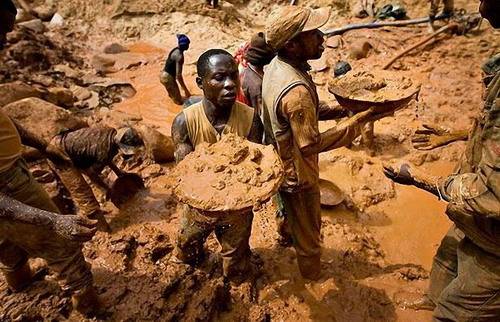
Mine in Congo
The report by University of British Columbia professor Marcello Veiga provides statistics on the use of explored deposits. According to it, gold is mined from one of 5,000 deposits. The remaining volume, which is not used by large companies, could be given to miners. The report says that improving the connection between companies and small cooperatives will significantly increase the volume of metal mined.
This approach is especially relevant for Russia, where the location of depressed areas often borders on small gold-bearing placers.
Nowadays, miners are subjected to dangerous work, dying under rubble, without reporting the place of work to the Ministry of Emergency Situations. Artisanal gold mining is extremely labor-intensive and low-productivity, so a small number of private gold miners is unlikely to have an impact on the sector. The use of cheap tools, knocked together in a few hours from random boards, reduces productivity and eliminates compliance with safety regulations.
The result of the strict ban on non-industrial mining is that every year from 15 to 20 tons of gold are illegally mined in the country, that is, 10% of the total volume. In total, there are 400 enterprises operating in Russian gold mining.
Thomas Walsh
Before becoming the owner of the legendary Camp Bird Mine, which produced more than $20 million worth of precious metals over 20 years, Thomas Walsh managed to move to America from his native Ireland, work in Massachusetts and catch the dreams of miners in Colorado. The turning point in Walsh's life was meeting Smokey Jones in South Carolina. The prospector offered Walsh a share in the Deadwood mine, but he refused, and later regretted it: over time, the site grew into the Homestake mine, one of the richest in North America.
The failure only spurred Walsh on: he firmly decided that next time he would not miss his chance. Hoping to find his own vein, the gold miner went to Colorado and was not mistaken. In the Ouray area, he discovered a deposit that later turned into the Camp-Berd Mine. And 20 years after the opening of the mine, Walsh sold it to a London syndicate and moved with his family to Washington, where they all quickly joined the social life of the city and became quite famous people.
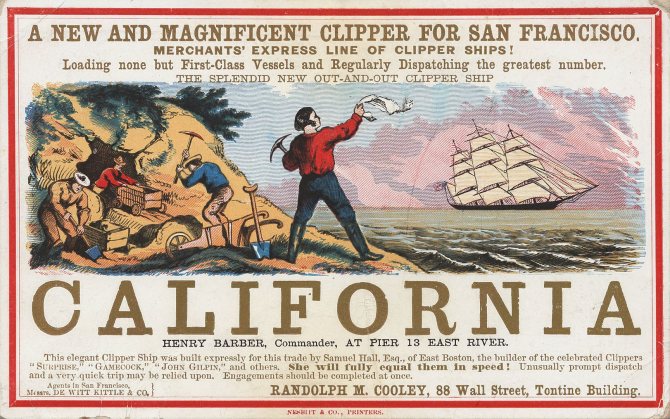
Advertisement for a tour to California, 1850s. (wikimedia.org)
Thomas Walsh is remembered in America not only as a successful entrepreneur, but also as a philanthropist and defender of the rights of the working class. At his mine, people were provided with high wages and a place to live with excellent conditions and excellent food. In addition, Walsh was one of the first to advocate reducing the 10- and 12-hour workday to 8 hours. As a result, Walsh was able to gain surprising loyalty from workers and avoid the strikes that plagued Western mines in the late 1800s and early 1900s.
Non-industrial gold extraction methods
- Mercury amalgamation. Sand amalgamation is used in cases where the gold fraction does not exceed 1 mm. A simple technology for separating gold from rock is to dissolve the metal in mercury, forming an amalgam. After its dissolution, the amalgam is separated from the rock and filtered through a fine-mesh cloth. In the resulting solution, gold makes up about 40% of the total volume. The remaining mercury is evaporated.
- Cyanidation. The method includes leaching, concentration and a purification step. Gold is leached as a result of the interaction of cyanide with oxygen, the concentrate is removed using activated carbon, filtration and calcination. Cyanidation purifies gold to a higher degree than amalgamation. The disadvantage is that cyanide vapor is especially dangerous.
- Chlorination. Hydrochloric acid and chlorine dissolve the gold, then the solids are filtered off, the gold powder is deposited on the filter and compressed into an ingot.
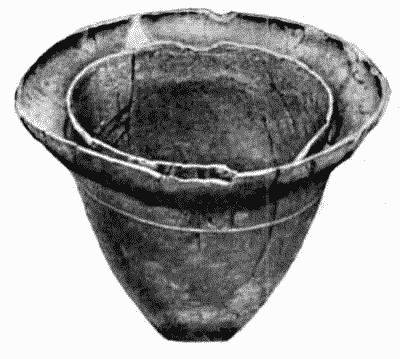
An ancient distillation vessel
In material obtained by amalgamation, the mercury concentration is rarely less than 5%. Chlorination allows metal to be purified up to 99%. Hydrochloric acid is highly toxic and requires safety precautions when handling.
Jim Skookum, George Carmack and Charlie Dawsen
The last large-scale wave of the gold rush occurred in the Canadian Yukon Territory. It was here that, together with prospectors, the writer Jack London searched for yellow metal, who later described his experience in such works as “White Fang”, “The Call of the Wild” and “A Thousand Dozens”. Gold miners from America, Great Britain, Australia and, of course, Canada itself flocked to the Klondike River.
It all started with three friends: military man George Carmack and the Indians Khaa Kuuh and Kheesh, also known by the names Charlie “Dawsen” Henderson and Skookum Jim. No one can say with certainty who was the first to find gold in the Klondike. According to one version, it was Carmack, according to another, Skookum Jim, who dragged the dead deer to the river. One way or another, they say, a placer of metal lay right at the bottom of Rabbit Creek, and the company did not miss the opportunity to get rich.
Information about the new rich deposit quickly spread around the world and attracted prospectors. Soon the gold reserves in the river became scarce, so finding the precious metal became much more difficult. However, Skookum Jim returned to the Klondike more than once in the summer and continued his search. Carmack also worked in other mines and invested in real estate later in life. During this time, Carmack, Dawsen and Skookum Jim found $1 million worth of gold.
Gold mining in Russia by prospectors
In Russia, it is prohibited for private individuals to mine gold. Gold mining is permitted to enterprises that have the appropriate permit at industrial sites.
Illegal mining of metals and precious stones entails criminal liability.
Carrying out illegal gold mining activities falls under Art. 191 of the Criminal Code of the Russian Federation “Illegal trafficking in metals, natural precious stones or pearls”, the sanction of which provides for restriction of freedom for up to 3 years. The extraction of precious metal by a group of persons was recognized as an aggravating circumstance, the punishment for which includes a fine of 1 to 3 million rubles or imprisonment for up to 7 years.
Tony Beets
Even after 120 years, the story of Yukon gold miners is not over - prospectors continue to search for valuable metal, battling the cruel elements. Among the daredevils who are ready to put everything on the line is Tony Beets. For more than 30 years in business, Tony has become a living legend. In 1984, he and his wife moved to Canada from the Netherlands, where he was engaged in farming and construction. Finding himself in a cult territory for prospectors, Tony immediately got down to business and went in search of gold.
At first, there were more disappointments than successes along his path, but overcoming difficulties only strengthened his character. Over time, Tony's talent as a prospector awakened, and he turned into one of Canada's most successful gold miners.
